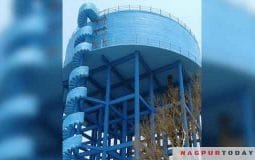
The latest report by the Intergovernmental Panel on Climate Change (IPCC) of the second part of its Sixth Assessment Report (AR6) was released on Monday, noted Climate Scientist Dr Anjal Prakash who is also one of the authors of this report provides a simplified outlook of the key implications for the Maharashtra region from this latest IPCC report:
IPCC MENTIONS MUMBAI
Sea level rise: Damages from rising sea levels in Mumbai, India, are estimated to be worth US$49-50 billion (₹4,900 – ₹5,000 crore) by 2050 and may climb by a factor of 2.9 by 2070. Another research included in the IPCC report estimated that if emissions continue to grow, damage from sea-level rise in Mumbai alone might cost up to $162 billion (₹12,082 crore) per year by 2050.
Mumbai’s Coastal Road Project: Infrastructural interventions can sometimes be maladaptive when assessed over longer time periods; e.g. the Mumbai Coastal Road (MCR) project aimed at reducing flood risk and protecting against Sea level rise will potentially cause damages to intertidal fauna and flora and local fishing livelihoods.
Flood Damage: A very high urban population is exposed to increased flood risk in megacities including Mumbai. In Mumbai, poorer families’ homes required many repairs to protect them against flood damage, and the total cost of those repairs consumed a larger proportion of their income than for wealthier ones. Building the resilience of vulnerable people necessitates robust community and government institutions capable of supporting efforts to cope with catastrophic occurrences, as well as social protection and development measures to assist at-risk or vulnerable populations. Among the 20 largest coastal cities with highest flood losses by 2050, 13 are in Asia (including Mumbai).
IMPLICATIONS FOR MAHARASHTRA
Heat & Humidity: Wet-bulb temperatures, a measure that combines heat and humidity, are mentioned in the study. Even for fit and healthy individuals lying in the shade, a wet-bulb temperature of 31°C is exceedingly harmful to humans, while a temperature of 35°C is unsurvivable for more than 6 hours. According to research mentioned in the IPCC report, wet-bulb temperatures in India seldom surpass 31°C, with most of the country seeing maximum wet-bulb temperatures of 25-30°C. With continuing emissions, parts of central India including the Vidarbha region as well as coastal cities are all at risk of exceeding wet-bulb temperatures of 32-34°C.
Infrastructure adaption options: Climate-resilient electrical infrastructure is especially important for coastal megacities like Mumbai, which serve as regional economic centres and are home to tens of millions of people across Asia.
Adaptation: Adaptation refers to changes in ecological, social, or economic systems as a result of existing or anticipated climatic impacts. To put it another way, governments and communities must create adaptation solutions and take action to respond to current climate change consequences as well as plan for future implications. Although the share of climate financing spent on disaster preparedness is not very large in megacities like Beijing, Mumbai, and Jakarta, the majority of adaptation efforts were focused on disaster risk management.
Projected migration: As the global climate crisis intensifies, more people are being compelled to evacuate their homes as a result of natural disasters, droughts, and other extreme weather events, in order to locate safer places to assure their future generations’ safety.
Those migrating due to the effects of climate change, including water scarcity, crop failure, sea-level rise, and storm surges. The Gangetic Plain and the Delhi–Lahore corridor are migratory hotspots in South Asia, as are coastal cities like Chennai, Chittagong, Dhaka, and Mumbai, which would be concurrently vulnerable to climate change impacts and important migration destinations, and accelerated rural-urban mobility.
IPCC MENTIONS NASHIK
While there are national policy initiatives such as the Smart Cities Mission covering 100 cities in India (e.g. technology-enabled water, energy, and land management for urban agriculture in Nashik city), however, the efficacy of such measures, especially for larger 14 sustainability and climate change goals remains to be seen.
QUOTES
Dr Anjal Prakash is the research director and adjunct associate professor at the Bharti Institute of Public Policy, Indian School of Business/ Current author of IPCC 6th Assessment Report Working Group II
Urbanisation & Adaptation
“There are several things striking in this report – the entire urbanisation process and climate change interaction with that process. Globally, over 4.2 billion people are living in urban spaces, and in India the rate of urbanization is about 35% and it will be 40% by 2050 itself. Thus considering the concentration of population is very high, urban adaptation with focus on climate resilience is crucial, and the latest IPCC report takes a deep dive into this. Urban India will be driving the growth process but it is also at a greater risk because climate catastrophes are also increasing.”
Coastal areas & climate impacts
“The impact of cyclones are going to be much more pronounced in the future for Mumbai, both pre and post monsoon cyclones will increase. India has a 7,500 km coastline, most of the megacities like Mumbai, Kolkata and Chennai are situated along the coastline. So the impacts of sea level rise, storm surges, cyclones and rising sea surface temperatures are all high risk factors for these megacities and adaptation is the primary solution.”
How must we adapt?
“Specifically for megacities in India like Mumbai, there has to be combination of strengthening green and blue infrastructure. While green infrastructure includes more focus on urban greening and biodiversity protection such as improving Mumbai’s mangrove as well as terrestrial green cover both being the first line of defence for different climate anomalies, blue infrastructure refers to protecting and enriching waterbodies, cascading lake systems, streams and rivers across the city. Both of these have to be protected with strong planning and intent. We are not saying urbanisation is bad but since it is going to increase why not plan it through the lens of resilience and ensure the urbanisation process is green. We have given some case studies from India in this IPCC report of Surat, Indore and Bhubaneshwar where local level planning process (top down and bottom up planning and management) has been strong.”
Heat Resilience
“One of the major projections of this report is that heat waves are going to rise, and areas in central India, especially the Vidarbha region of Maharashtra will face serious impacts of this. Both urban and rural areas need to adapt to this. Increasing more air conditioning systems will contribute to higher greenhouse gas emissions. We must look at our own ancient systems that were used for colling – passive cooling technology – which was used in our ancient architecture. These options are needed to be taken into account to improve our modern living with imprints from our past. This is highlighted as a way forward in the IPCC report citing India’s historical cooling examples. In Maharashtra, there are some regions that are also water starved. While there are watershed management projects that are going on, this needs to be scaled up in light of the threat from heat waves in the near future.”
Climate resilience while planning cities
“In India, there are several tier II and III cities that are being built opening up avenues for change through climate resilience. There should be local level short and longterm climate projections for these cities while planning these cities. The IPCC has now provided a regional understanding, we can now zoom in on it to understand how specific cities can be impacted. Overall, Maharashtra has taken strong steps towards climate resilience with series of decisions over the past year for its cities and it is laudable. Through focussed climate action plans, Maharashtra cities must see through implementation of its plans keeping special focus on adaptation and resilience.”
(This briefing note is part of a project under the ‘Simplifying Science’ Programme of creating a stronger narrative on Climate Change in cities across India by Asar Social Impact Advisors Pvt Ltd, which aims to engage people to have a conversation about Climate issues, its impact on the environment, people and the economy & amplify solutions. In a continued attempt to build this discourse, we have previously simplified & shared research papers on Climate & Air Quality under this initiative and, will continue this effort)









